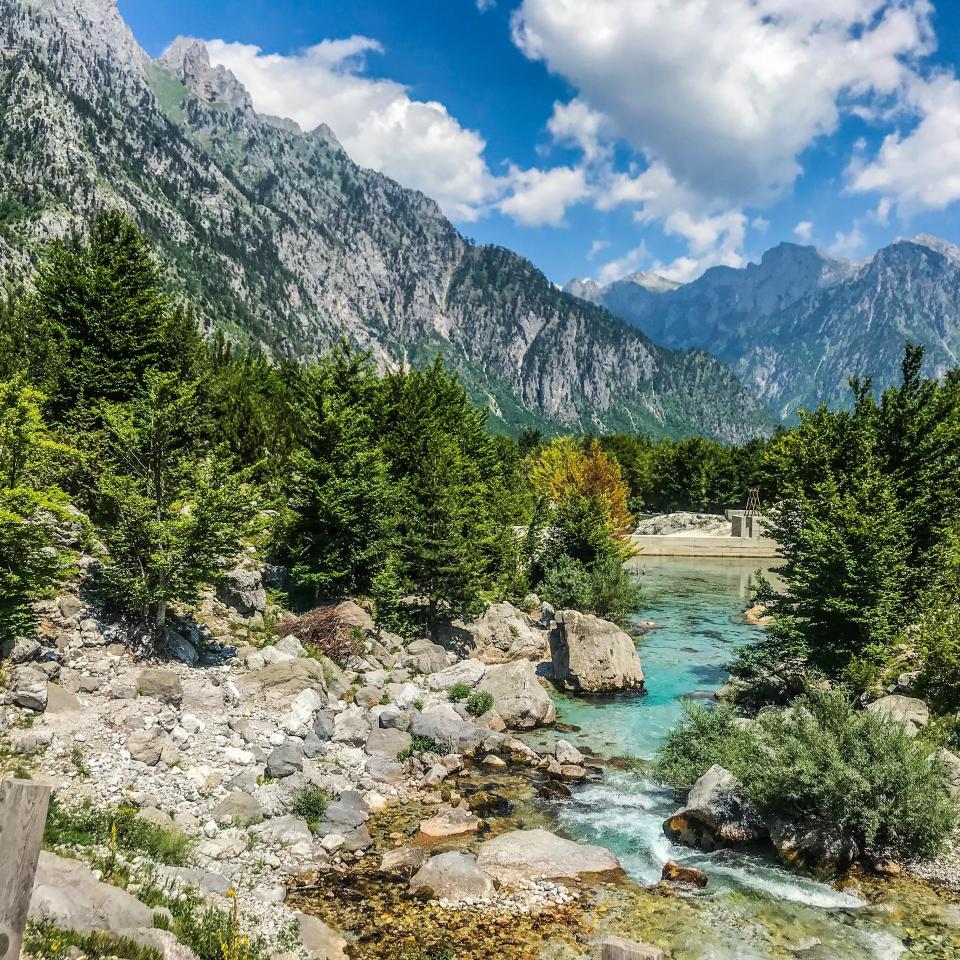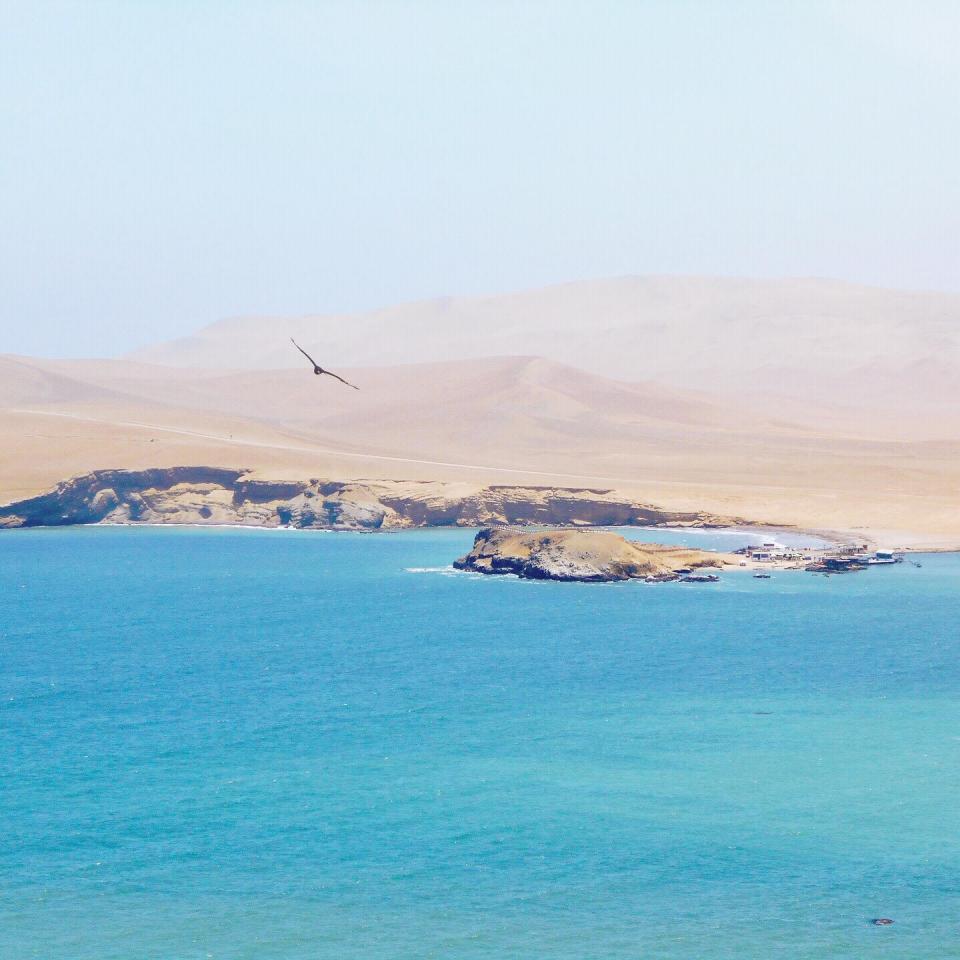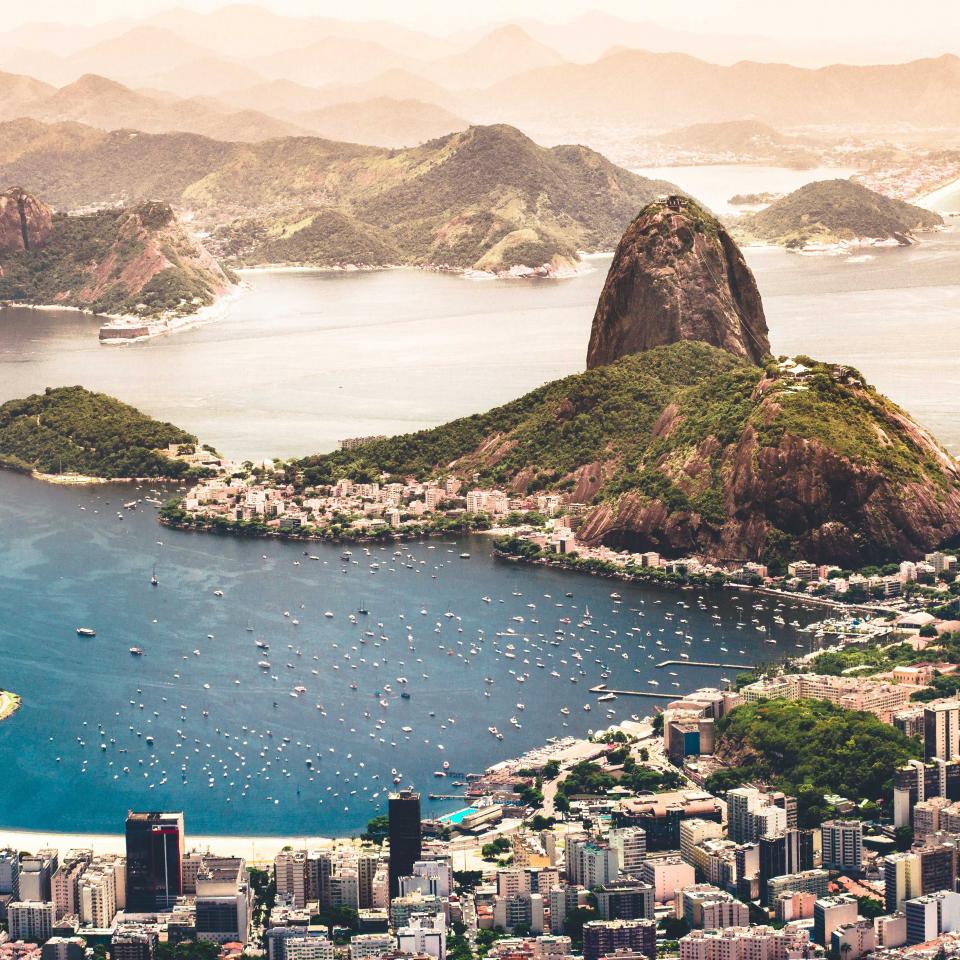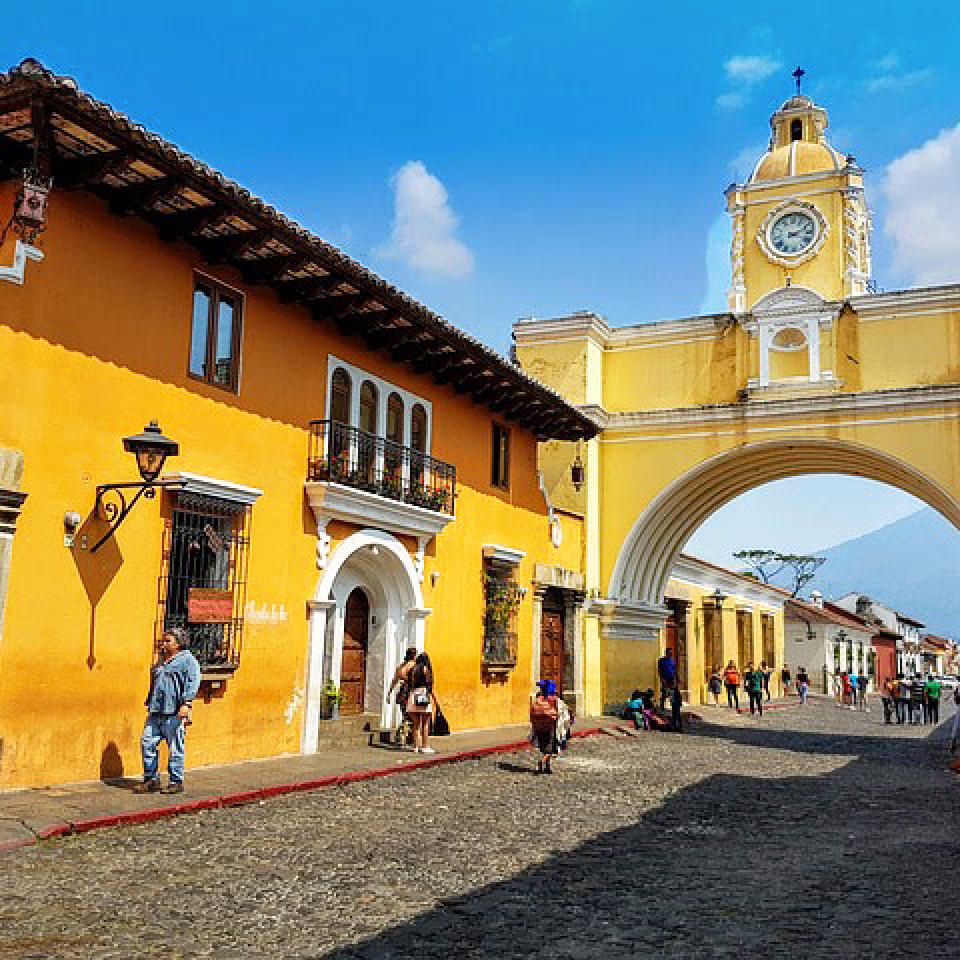The Camino de Santiago, which translates as ‘The Way of St James’, is a pilgrimage walk to the Santiago de Compostela in Galicia, Spain. It is here the remains of St James were discovered in the ninth century making it of vital religious importance. However, while historically, a pilgrimage walk is defined in religion, many people use the Camino de Santiago as a spiritual vessel to connect their internal being with the natural world. By using this vessel, the Camino offers time, space and disconnection from modern day distractions and it is incredibly popular with intrepid travellers. In fact, every year, hundreds or thousands of people from all over the world walk the Camino de Santiago, either on their own or with organised tour groups.
How does the Camino de Santiago work?
Whether you decide to go it alone, or join an organised group, the best thing about the Camino de Santiago is that you don’t have to be an experienced hiker or ultimate athlete to do it. There are no set dates either, so you can choose to do it whenever you like for however long you want. However, in order to receive your Camino de Santiago completion certificate, you must complete the minimum of 100km. As mentioned above, there are tour agencies that you can go through if you want to go with an organised group, but where would the fun be in that? It is super easy to do it by yourself and much much cheaper.
The routes are very well marked out with yellow arrows and scallop shells and there are always other travellers or locals around to help you. At the start of your route (wherever that may be, see below for the different Camino routes) you will receive your pilgrim passport and as you walk your chosen route, you gather stamps along the way at set points, before receiving your completion certificate at the Santiago de Compostela in Galicia.
The Routes of The Camino de Santiago
There are many different routes you can take in order to complete the Camino de Santiago, starting in either France, Spain or Portugal (traditionally pilgrims would start from their homes, wherever they may be). Technically you can start anywhere in Europe and if you finish in Santiago, that is considered a Camino - but outside of the established routes there will be little infrastructure for pilgrims such as route markings and accommodation. The most popular routes of the Camino de Santiago are:
The Camino Frances (The French way)
The French way is the most popular route. Starting in St Jean Pied de Port, a french town close to the border of Spain. You walk the breath of Spain and into Santiago. Total distance 770Km. Most people however don’t start in St Jean Pied de Port and instead begin in Sarria and walk the last 100Km of the Camino. This route takes around six days, depending on how many Km you do in a day. Six days is based on an average of 25km per day (or between 5-6 hours of walking per day).
Sarria → Portomarin → Palas de Rei → Arzua → Rua → Santiago
The Camino Portuguese (The Portuguese way)
The Portuguese way is the second most popular choice. Traditionally this route starts in Lisbon but most prefer to start in Porto which is what I did. From Porto it is 260km / 280km depending on the route you take. You can either take the Coastal route or the Central Route (the central route is more popular with pilgrims).
Camino del Norte (The Northern route)
The Northern route s quickly growing in popularity. This route takes you across over 800km of Spanish coastline (four weeks of walking) before reaching Santiago. There are many more routes to choose from, but you must walk at least 100km into Santiago in order to receive your Compostela Certificate. This route is a good alternative to the French way if you are looking for a long route. The starting point is in Irun, a small Spanish town that borders with France. Total distance is 825Km.
Other routes include:
Camino Primitivo (The Original Way) 320Km. Starting in Oviedo, Spain.
Via de La Plata (The Silver Way) 120Km. Starting in Seville, Spain.
Camino Ingles (The English Way) 120Km. Starting in Ferrol, Spain.
When is the best time to walk the Camino de Santiago?
The main factors to take into consideration when you are planning to do it, is the time of year and weather conditions but this is dependent on the route you decide to take.
During June and July, the Camino Frances (due to its popularity) can be very busy, so the other routes may be preferable. I would suggest going in Spring when it is a little cooler and less humid (April or May).
During the Summer months (June-August), the Camino del Norte and Camino Primivito are great because it is nice and warm with little or no rain. However, if you are walking the Via de la Plata and the Portuguese Camino in the Summer months, the weather will be unbearably hot.
The busiest time for most of the routes is between July and August - instead, if you would like to avoid the crowds, opt for the shoulder season months of May, June, September and October.
Depending on the route you take (I took the route from Porto to Santiago de Compostela), the landscape will vary. One thing you can be sure of is luscious green valleys, winding rivers, cobbled streets, dense forests, vineyards, isolated villages, fairy tale churches and welcoming locals.
How long does the Camino de Santiago take?
As mentioned above, you can choose how long you would like to walk for, but if you want a certificate of completion you must walk for at least 100km. Most people walk for between 1-2 weeks, but you can do longer or shorter trips. I met one lady who walked from Italy! You can also complete the Camino in a couple of stints - so you could walk half of it in one week and then return later in the year to complete it. The beauty of the Camino it is that it is completely up to you. You are in charge!
Accommodation along the Camino de Santiago
Public & Private Albergues
If you are walking without a tour, the main choice of accommodation is pilgrim hostels, known as albergues which are dotted along the routes. Public albergues are municipal owned and run by volunteers, costing between €5-10 a night (some are donation led so you pay what you think is appropriate). Please note that they require your pilgrim passport in order to stay. They are large buildings with dormitory style rooms, often with 40+ bunk beds. Please note that you cannot book these in advance, so depending on when you are walking (remember in the Summer the routes can get very busy), there will be times when all the beds are taken. In this case, mattresses are put on the floor.
Go Travel and Talk Top Tip - Try and arrive at your next Albergues before 3pm to ensure you get a bed (which means starting your daily walk VERY early in the morning).
If there is no space, you can stay in a private albergues for €10-12 per night. Private albergues are not run by volunteers and instead organisation or person owned. They offer the same accommodation options (if not a little nicer) but cost a little more. They feel more like a standard hostel, often include disposable bedding and you can book them in advance unlike publich albergues.
The facilities of albergues vary from place to place, some are better than others but almost all come equipped with hot showers. The house rules also vary but almost all albergues have a curfew and you need to be in bed by 9-10pm at night, up for breakfast around 6am and to leave by 8-9am. While this is a great budget option and a unique experience, public albergues can be a little overwhelming due to the amount of people staying in them. You may also struggle to sleep at night, especially with some people setting off as early as 4am the next morning.
Hostels / Guesthouses
Alternative accommodation options would be regular hostels or little guesthouses found along the way. Although these tend to be a little more expensive (around €15 per night), it could afford you a more comfortable experience. These can be booked on booking.com or through Hostelworld. There is also the option of hotels, averaging around €30 per night for a double room.
Go Travel and Talk Top Tip: If you do not want to stay in albergues, book your hostels a few days ahead of your arrival - especially in high season (Summer). Accommodation along the Camino routes fill up fast.
Food options along the Camino
You will often find local restaurants and bars selling a ‘Pilgrim Menu’ or ‘Menu del dia’ which consists of three courses, starting with bread or salad and a main of pasta with the choice of beer or wine, costing €10. This may get a bit boring after a while, so you could cook with your fellow walkers - most of the hostels have cooking facilities and sometimes they provide an option of dinner for you in the way of communal eating. There are plentiful shops along the way to buy snacks, although I would suggest having some good energy bars stashed away in your rucksack for emergency moments.
Go Travel and Talk Top Tip: If you are vegan or vegetarian, plan ahead and choose your hostels/villages wisely – for example you are better off finding places where you can buy and cook your own food. A variation of the pilgrim menu is possible and would consist of: salad, pasta dish and fruit.
Packing essentials for the Camino de Santiago:
Blister / compeed plasters and gel
Hydration Bladder: Super important. Get a 2 litre bladder and fill it up in the morning for the day ahead
A Good backpack: breathable and specifically designed for walking long distances. I recommend the Airzone pro ND +33:40. Make sure it has pockets at the front so it is easy to reach your phone to take some snaps.
Good walking shoes: Make sure they are broken in properly if they are new!
Tiger balm / Volteron: Put this on your shoulders in the evening. It is good for muscles and acts as an anti inflammatory. Also apply around the knees and ankles.
Mosquito / bug spray
First aid kit: include tape, scissors, safety pin and lighter for blister recovery and care.
Raincoat / waterproof clothing
Shorts and leggings
Underwear
Vests and long sleeve tops for the evenings
Sleeping bag / or just the liner (silk liner)
Battery pack
Travel towel (micro fleece)
Dry bags / zip lock bags
Eye mask / ear plugs
Lanacane/Vaseline: For chafing – shoulders and legs and your lower back because of backpack
Sunhat
Toiletries
Wet wipes and hand sanitiser
Pegs to hang clothes up
Sandals – Teva is a great make of sandals
Rain cover for bag or bin liners
**Try and make your pack as light as possible as you will be carrying it everywhere with you and most likely for 8 hours of walking a day. Many albergues have washing and drying facilities - so pack light and wash often. The cost to wash is usually around €3-4 per load, drying is €2-3 per load.
Camino de Santiago Costs
Walking the Camino de Santiago doesn’t cost very much, but it depends on how much comfort you are willing to sacrifice. If you are looking to do it on a super cheap budget, you can:
Stay in public Albergues for as little as €5 a night.
Make your own food, spending around €10 per day
Enjoy a menu del dia for dinner for €10
Pack light and do laundry - around €6 every 4 days.
€10 other (plasters, medical supplies)
On average, you are looking at around €200 per week for everything. But if you cut out the menu del dias, your expenditure comes right down to €130 per week.
Top Tips for the Camino de Santiago
Walk at your own pace
Don’t chase the guidebooks or what other people are doing. Don’t push yourself too hard to start with. Try doing 15-20km a day and build it up from there if you can / want to. If you are limited on time, you can split the Camino de Santiago up and complete it in multiple trips. Some people do half of the route and finish the rest later in the year.
Don’t over pack or make your bag too heavy
It will just be uncomfortable and unmanageable when walking. For women, aim for 5kg and for men aim for 6kg. If you do not want to walk with your backpack, you can organise a Backpack delivery Service. This is where your backpack is delivered to your next albergue ahead of your arrival. Expect to pay around €4-5 per backpack. There are several companies who offer this service, including the Spanish post office.
Note - the delivery can be arranged between private albergues, not public ones!
Buy a local sim card
With a local sim you will have internet access and you are able to make calls when you are walking through remote areas. Most albergues have WIFI so you wont need to use your data, but it is a good idea having the option when you are walking - just in case anything happens.
Get travel insurance for peace of mind
The Camino de Santiago can be physically and mentally challenging. You are walking long distances and some times in remote areas. Should anything happen, it is a good idea to have insurance.
Invest in a really good pair of walking boots
And make sure they are properly broken in before you start the Camino. You can wear walking shoes but they wont have the strong ankle support of boots - which is why I advise investing in the latter. Walking polls are also a good idea for extra support when walking long distances.
FAQs for the Camino de Santiago
Why should someone walk the Camino de Santiago?
It is a great way to explore and to see different countries in their entirety. It gives you an understanding of different cultures and you see some pretty incredible stuff. Walking through the Spanish countryside was indescribable. It also gives you time to think and it offers a great platform for you to get what you want to get out of it. You can choose to meet lots of people from all walks of life or you can have ‘me time’ and do some soul searching. There is such a good buzz when you reach the towns and cities because everyone understands and supports what you are doing – to them, it holds such huge religious importance. So, when you arrive at the Cathedral de Santiago there is cheering and dancing and so much singing. Everyone says ‘Bon Camino’ along the way. It is beautiful.
Hardest part of the Camino de Santiago?
The 43Kms on the last day. My feet were in bits from the new boots I bought (big error by the way). In the end I had to wear my friends sandals with socks to stop my blisters rubbing. I was in complete agony. I hit three pubs that day in the hope that beer would numb the pain. But for me, that was also one of the funniest times on our walk – I really learnt what I was made of and I had such a huge sense of accomplishment when I finished it, given the circumstances. At that point on the walk it was meant to take four hours on foot, but it took us six hours because of my waddling! 15Km in sandals and socks! If I was back home I would have got a taxi, but that’s what travelling to new places and experiencing different things does to you. It pushes you to your limits and more often than not, in those circumstances you surprise yourself.
Best part of the Camino de Santiago?
The feeling of achievement reaching the Cathedral de Santiago in Galicia. There was a huge clapping ceremony and all of the locals welcomed us with open arms. And the generosity of locals along the way - when you stop to buy a drink of water, you are given free food like sugary cakes to help you as you walk. They are so welcoming and inclusive, you really feel the sense of community.
My biggest advice for Camino newbies
Pack the right kit, have a good backpack and don’t go into it with too many expectations. Let the Camino be what it is for you. I wanted to do the Camino de Santiago because I had some questions I thought it could help me answer. But actually, I think I put too much pressure on it. I am not sure I achieved spiritual enlightenment but with so much time to think and with so much beauty around me, I couldn’t help but reflect on my thoughts and feelings… and that’s where my answers came from.
Would you do the Camino on your own?
For me, I wanted to complete to Camino with a friend by my side, but that doesn't mean you can't / shouldn't do it on your own. On my journey, there were times when I faced real low moments (like the last 45Km blister horror show), so having someone there to support and motivated me really helped. But for some people, walking alone is what they need at that present moment. I met a lovely German girl who had recently lost her grandma and for her, the Camino was a religious journey to try and come to terms with her death. For other independent walkers they used the Camino as a platform to meet other like minded people and come away with friends for life – it is completely dependent on the person. I liked having the support and company of my friend James, but also the option of walking for periods on my own. If you are going with someone else, make sure you are both on the same page.
Closing Thoughts...
People are attracted to this pilgrimage for many different reasons and whether it is based in spirituality or religion, it doesn’t matter. The one thing you can be sure of though, is that it will give you the time and space to work through those internal questions you may have been avoiding. In addition to this, it is a beautiful way to see different countries in all their glory and gain a sense of achievement when you have completed it.





